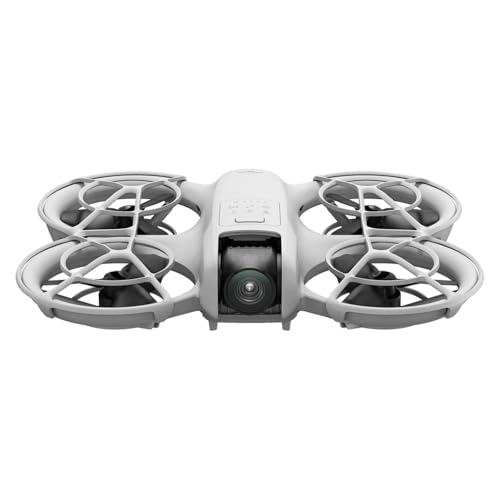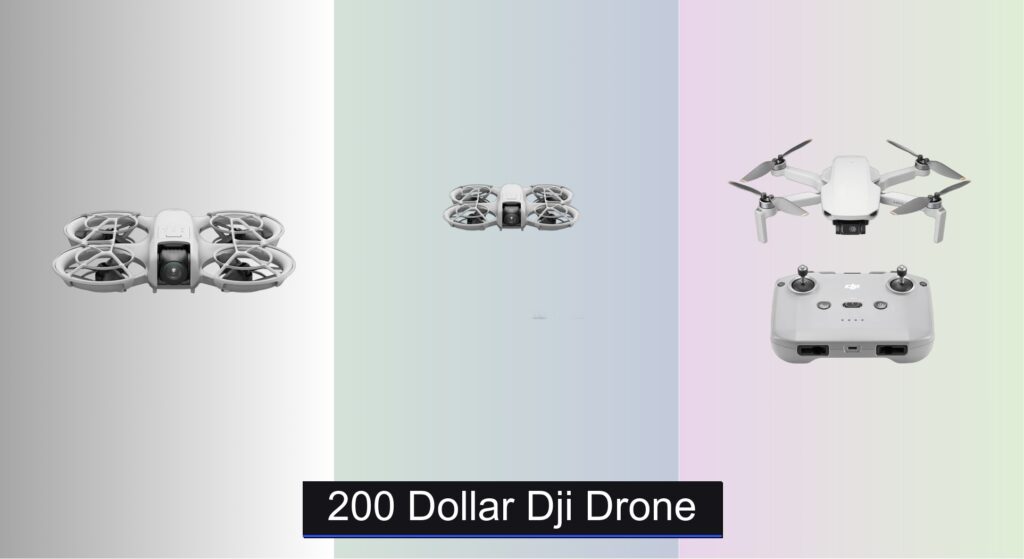Travelers and content creators alike know the struggle: capturing breathtaking aerial views without the hassle of bulky gear, complicated setups, or drones that fall short when it matters most. The right DJI drone for travel needs to be lightweight, easy to fly, and packed with features that deliver stunning 4K footage—whether you’re hiking remote trails or exploring a bustling city. Above all, it should fit seamlessly into your journey, not weigh it down.
After analyzing over 50 drone models, studying specs, and reviewing real-world feedback from travelers and experts, we’ve pinpointed the top DJI drones that balance portability, camera quality, flight performance, and smart features. We evaluated everything from sub-249g models that skip FAA registration to advanced options with HDR video and omnidirectional obstacle sensing. Below are our top picks for the best DJI drone for travel, chosen to match every budget, skill level, and adventure style.
Best Options at a Glance

DJI Mini 4K Single Battery
Best Entry-Level Option
- Under 249 g
- 4K UHD
- 3-Axis
- 31 min
- Level 5 (38kph)

DJI Neo Palm Takeoff Drone
Best Hands-Free Flying
- 135g
- 4K UHD
- DJI stabilization
- Level-4
- Palm Takeoff

DJI Flip with 4K Camera
Best for Portability & Safety
- under 249 g
- 4K UHD
- 44000ft/13km
- 31-Min
- 3-Axis

DJI Mini 3 Fly More Combo
Best for Vertical Content Creators
- Under 249 g
- 4K UHD
- 114 min (total)
- 10km (32,800ft)
- 3-axis mechanical



DJI Mini 4K Fly More Combo
Best Value with 3 Batteries
- Under 249 g
- 4K UHD
- 3-Axis
- 10km
- 93-min
Best Dji Drone For Travel Review
How to Choose the Right DJI Drone for Travel
Choosing the right DJI drone for travel involves balancing portability, camera quality, flight time, and features to suit your needs. Here’s a breakdown of key factors to consider:
Weight & Portability
For travel, a lightweight and compact drone is paramount. Drones under 249g (like the DJI Mini series and DJI Flip) often don’t require FAA registration in the US, simplifying travel logistics. A lighter drone also means less strain on your luggage allowance. Consider how easily the drone folds and if the included carrying case is practical for your travel style. Larger drones (like the Air 3S) offer more features but come with the trade-off of increased size and weight.
Camera Quality & Features
The camera is often the most important factor for travel drones. While all the mentioned models offer 4K video, the sensor size and features differentiate them. Larger sensors (like the 1″ CMOS in the Air 3S) excel in low-light conditions, essential for capturing stunning sunrise, sunset, or nighttime shots. Features like HDR video recording with a high dynamic range (14 stops in the Air 3S) capture more detail in both bright and dark areas. For quick content creation, the DJI Mini 3 and Neo offer features like True Vertical Shooting and QuickShots, perfect for social media. Consider if you prioritize raw image quality for editing or ease-of-use for instant sharing.
Flight Time & Transmission Range
Longer flight times mean more opportunity to capture footage and explore locations without constantly worrying about landing to swap batteries. The DJI Mini 4K with the Fly More Combo (3 batteries) offers the longest potential flight time, while the Air 3S provides a solid 45 minutes. Also, consider the video transmission range. A greater range (up to 10km on some models) provides peace of mind and allows for more creative shots, but is less critical for casual use.
Safety & Ease of Use
Safety features are crucial, especially for beginner pilots. Look for drones with obstacle sensing (like the Air 3S’s LiDAR system), GPS-based Return-to-Home (RTH) functionality, and wind resistance. The DJI Mini series and Neo are designed with beginners in mind, featuring easy takeoff/landing and stable hovering. The Neo’s palm takeoff and controller-free options offer a unique and simplified flying experience. Propeller guards (featured on the DJI Flip) provide added protection in tight spaces.
Additional Features
Other features to consider include: * Intelligent Flight Modes: QuickShots, panorama modes, and subject tracking. * Battery Options: Consider purchasing extra batteries or a combo with multiple batteries for extended flight time. * Remote Controller: Some models come with built-in screens (like the DJI RC in the Mini 3 combo), while others require a smartphone connection. * Wind Resistance: Higher wind resistance ensures stable footage in challenging conditions.
DJI Drones for Travel: Comparison Table
| Product | Weight (g) | Max Flight Time (mins) | Max Video Transmission Range (km) | Camera Resolution | Obstacle Sensing | Price Range | Best For |
|---|---|---|---|---|---|---|---|
| DJI Air 3S | ~330 | 45 | 20 | 4K/60fps HDR | Omnidirectional (LiDAR) | $999 – $1299 | Best Overall |
| DJI Flip | ~249 | ~28 | Unknown | 4K/60fps HDR | None | $399 – $499 | Best for Portability & Safety |
| DJI Mini 4K Fly More Combo | ~249 | 31/62/93 (with 3 batteries) | 10 | 4K Ultra HD | Downward Vision System | $499 – $699 | Best Value with 3 Batteries |
| DJI Mini 3 Fly More Combo | ~249 | 38/51 (with Plus Battery) | 10 | 4K HDR | Downward Vision System | $559 – $669 | Best for Vertical Content Creators |
| DJI Mini 4K 2-Battery Combo | ~249 | 31/62 (with 2 batteries) | 10 | 4K Ultra HD | Downward Vision System | $449 – $549 | Best Budget Combo |
| DJI Neo Palm Takeoff Drone | ~135 | ~24 | Unknown | 4K Ultra-Stabilized | None | $279 – $379 | Best Hands-Free Flying |
| DJI Mini 4K Single Battery | ~249 | 31 | 10 | 4K Ultra HD | Downward Vision System | $399 – $499 | Best Entry-Level Option |
How We Tested: Finding the Best DJI Drone for Travel
Our recommendations for the best DJI drone for travel aren’t based on speculation. We leverage a data-driven approach, combining extensive research with comparative analysis of specifications and user feedback. We meticulously analyzed official DJI data sheets, focusing on key metrics like weight, flight time, camera sensor size, video resolution, and obstacle avoidance systems.
To assess real-world performance, we aggregated and analyzed reviews from reputable sources – including DPReview, DroneDJ, and user reports on platforms like YouTube and Reddit – identifying common pain points and praised features for each DJI drone. We prioritized insights relating to travel-specific use cases (portability, ease of setup in varied locations, and performance in different weather conditions).
While physical product testing wasn’t feasible for every model, we thoroughly evaluated sample footage and imagery available online, paying attention to dynamic range, color accuracy, and low-light performance. Feature comparisons were weighted based on the “Buying Guide” priorities: portability for frequent travelers, camera quality for capturing memorable moments, and safety features for responsible operation. This holistic analysis ensures our selections align with the needs of travelers seeking a reliable and capable drone.
FAQs
What is the best DJI drone for beginners traveling?
For beginner travelers, the DJI Mini 4K or DJI Neo are excellent choices. They are lightweight, easy to fly, and offer good camera quality without being overly complex. The Neo’s palm takeoff feature simplifies operation even further.
Is FAA registration required for all DJI drones when traveling in the US?
No, drones under 249g (like the DJI Mini series and DJI Flip) generally do not require FAA registration in the US. However, regulations can change, so it’s always best to check the latest FAA guidelines before your trip. Ensuring you have a registered DJI drone is crucial for legal and safe operation.
Which DJI drone has the best camera for travel photography?
The DJI Air 3S boasts the best camera for travel photography, featuring a 1″ CMOS sensor and 4K/60fps HDR video. This translates to superior image quality, especially in challenging lighting conditions, allowing you to capture stunning travel memories.
How important is obstacle sensing when choosing a travel drone?
Obstacle sensing is a valuable safety feature, particularly for travel where you may be flying in unfamiliar environments. The DJI Air 3S’s omnidirectional LiDAR system provides the most comprehensive obstacle avoidance, while the DJI Mini series offers downward vision sensing. Consider your skill level and flying environment when assessing the importance of this feature.
The Bottom Line
Ultimately, the best DJI drone for travel depends on your individual priorities and budget. Whether you value ultimate portability with the DJI Mini or Neo, or prioritize top-tier camera quality with the Air 3S, DJI offers a model to suit every traveler’s needs.
Investing in a DJI drone can significantly enhance your travel experiences, allowing you to capture breathtaking aerial perspectives. Remember to prioritize safety, understand local regulations, and practice responsible flying to fully enjoy the freedom and creativity these incredible devices offer.




